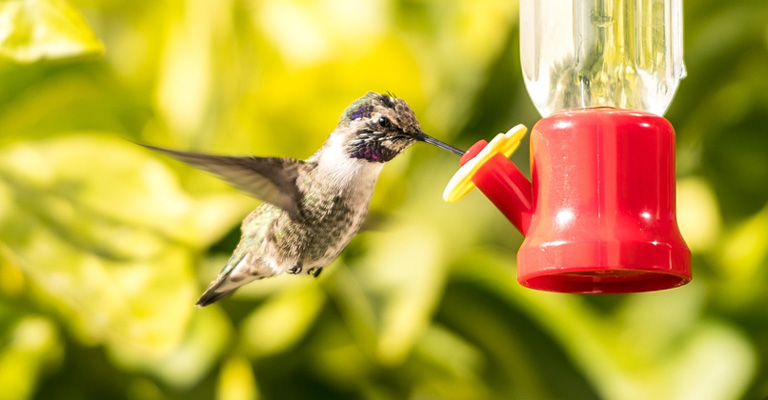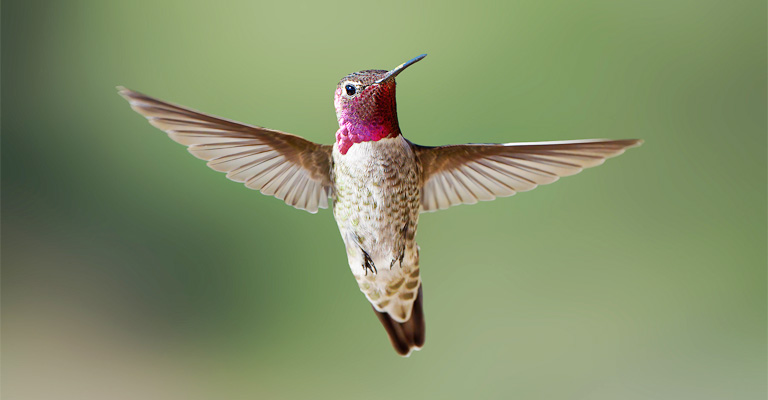Not only in our world, but you will notice bullies in the world of birds also!
And when it’s about hummingbirds, sometimes, the tiny dynamos can turn into bullies while protecting their home. So, how to deal with a bully hummingbird?
Hardly any research paper can tell you how to deal with a wild hummingbird. But we can! Our experts understand the hummingbirds better, and with a few practical tips, you can easily handle the angry little beasts!
Let’s begin.
About the Hummingbirds
- Hummingbirds are the only birds that can fly backward.
- They have the highest metabolism than any other birds. They need food multiple times a day.
- The smallest hummingbird species, the Bee Hummingbird, measures just 2-2.4 inches in length.
- The birds have excellent memories and can remember every flower they have visited.
- The tongues of the hummingbirds can spread and retract at incredible speeds, up to 15 times per second.
- They are expert hoverers and can remain in one place in mid-air with rapid flaps of their wings.
- They can incredibly beat the wings 50-80 times per second. It makes a beautiful humming sound.
- The tiny birds can see ultraviolet light. It helps them locate nectar-rich flowers.

Why Do Hummingbirds Be A Bully?
In short, when the birds don’t feel safe in their surroundings, they start to behave strangely. A set of strange behaviors can follow and they are,
1) Territorial Nature: Our tiny friends are territorial. They defend not only their home. They also want to ensure that the garden or feeder they feed from is safe and sound.
Any other competitor or even other hummingbirds are not welcome in the specific area. It’s in their nature to confirm that they have access to the best food sources.
2) Food Is Limited: Hummingbirds have a high metabolism. They need more food than usual. And that’s why they constantly search for nectar from flowers and feeders.
However, the food sources are limited. Apart from hummingbirds, other consumers are also online such as bees and other birds. The competition is huge. Plus, not many of us from a human locality can harvest feeders with nectars.
This is why, when other hummingbirds enter the territory of another, they might want to chase it away and protect the food sources.
3) Mating Competition: Male hummingbirds can often be aggressive when trying to attract females during the mating seasons. It is not too uncommon to fight against another rival bird to improve their chance of mating.
While these behaviors may seem like bullies, the birds are just in survival mode. This is the urge to confirm they get what they need to live on. In the wild, every animal has to struggle to survive. The same goes for these hummingbirds also.
They have to route out all the other risk factors to offer a safe environment for themselves and the young ones.
How Do The Hummingbirds Bully?

Look for the behavioral traits we mention below. When you notice a hummingbird doing any of the following, be sure that it’s a bully hummingbird.
Not in the case of the Rufous Hummingbirds. They are always angry and renowned for their temper.
Angry Noise: It is the first sign to detect an angry hummingbird. If it makes loud noises like, quick chirping or buzzing, it’s a warning! The birds are really not in a good mood and might start to attack when you go near.
When another hummingbird gets into their territory, they chirp highest to drive them away.
Thorny Movement: Hummingbirds change their body posture when they are in the mood for bullying. They would fluff and look larger in order to look more aggressive to the outsiders. They would fluff their feathers and raise their tails high, spread their wings to frighten any invaders.
Dive & Draw Away: If the intruder is large, such as us humans, they may hover over our heads and offer a sudden glide. They genuinely dive when the invader is unaware of the bird’s presence at first.
The birds would ultimately want to chase the intruders out of their territory. With a stubborn intruder like other birds, or baby hawks, they would simply chase it away from their home.
They Are Fighting! Eventually, when nothing works out the hummingbirds may engage in a fight to drive the outsiders away. Although they are tiny! Size won’t draw them backward in a fight. They are tactical and strategic in fighting.
They would use their beak and talon to attack the intruders. If the fight continues, one of them may die due to over-bleeding or poor injury.
Like any other bird, hummingbirds would also want to drive away the intruders. They would first warn and show visible body signs. But if they still don’t leave, diving, chasing, or fighting becomes the ultimate step to handle the outsiders.
How to Deal With a Bully Hummingbird?

Let’s get to the point. Are you inviting the birds to your backyard? Because, if the birds are simply living in the wild, you may be able to do so much to protect their in-species bullies.
You can monitor and control your yard and offer them an open space where they would not engage in fights. Here’s what you can do.
Multiple Feeders: Have a few hummingbird feeders and place them differently at multiple sports at your backdoor. Keep the feeders at least 10 to 15 feet away from each other. It will ensure no single bird controls all the food.
Also, it is wise to hang the feeders near plants or trees so that hummingbirds can hide when they feel threatened.
Change the Feeder Spots: Don’t keep the feeders in one spot for a long time. Move within a few days or at least a week. It will confuse the bullies and prevent them from taking over a single spot.
Also, remove or change the perches to make it harder for the bullies to dominate. The bullies often sit on perches to guard the feeders.
You should also keep the feeders full or half full. When food is limited, there are higher chances of more birds gathering around and fighting for food.
Nectar & Flowers: You can try nectars (self-made or commercial). Also, flowers can be an ideal solution. Hummingbirds love flowers. With a variety of food options, they may be less drawn to feeders.
In Summary,
Try everything out and sometimes, it may not work out! In this case, we recommend you have patience. Sometimes, the bullies fly away during migration.
Do you like our article? We hope now you won’t have any problem detecting the bullies and dealing with them smartly. We share regular articles on birds. Please keep an eye on our blog section to get more useful information.
Also, share our article with your friends and help us grow!